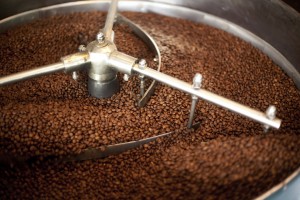Shortly after the “green” coffee beans are harvested, they are immediately shipped to one of 5 manufacturing/roasting plants. The term “green” refers to a coffee bean that has yet to be manufactured or refined in any way. The beans are then roasted until evenly browned and removed from the roaster to be blended. After blending, the beans are immediately packaged and packed to be shipped.
Starbucks controls 4 U.S. manufacturing/roasting plants and 1 European manufacturing/roasting plant. By almost doubling their production output by opening their fourth U.S. plant in early 2009, Starbucks was able to switch from a 7 day-a-week work schedule to just a 5 day work week. Each plant is capable of producing about 1.5 million pounds of coffee beans per week.This 5 day work week helps reduce carbon emissions and also allows the employees more time to be with their families.
Since 2004, Starbucks has been focusing on renewable energy, energy conservation, and climate adaptation and mitigation efforts. It has been through these efforts that Starbucks has become the largest purchaser of renewable energy in their sector of business.
In addition to their manufacturing/roasting plants for their coffee beans, Starbucks also owns and controls 2 U.S. based bakeries, for all baked goods sold at stores, and 2 tea processing plants for their Tazo Tea subsidiary.
Click here to view the locations of the manufacturing/roasting plants.

wow
wow
I am interested coffee used empty bags I will buy high quality if you have please contact us
I am interested used and cut empty bags of coffee if you have please contact us i will buy high quantity. I can contact with you
Thanks
I am interested used and cut empty bags of coffee.if you have please let me know.i can contract with you